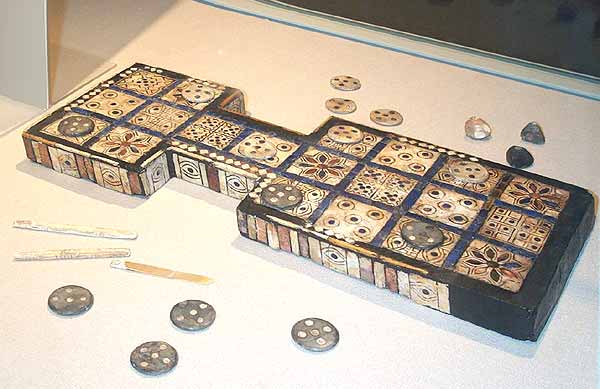Steve visits London’s British MuseumA boardgame dated at around 2600 BCE was found in the royal tombs of Ur. The squares are inlaid with either limestone or lapis lazuli. Each player had five pawns, moved according to the results of a toss of a pair of knucklebones (one of a sheep and one of an ox). Apparently landing on a rosette signified good luck, while landing in a non-rosette spaced forced the player to pay a penalty. This much is revealed in a tablet dated at around 177-176 BCE that describes the game. << Back Next >> |